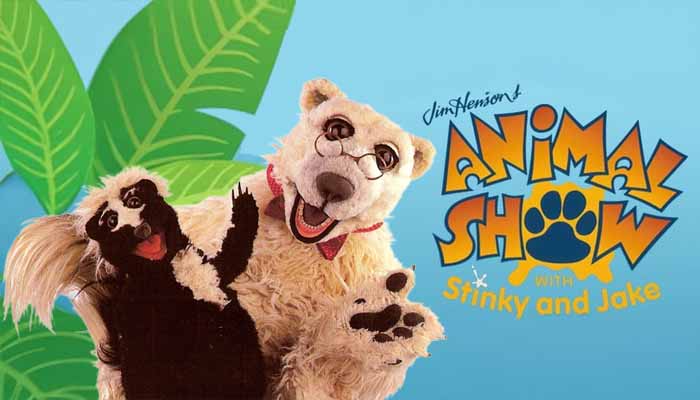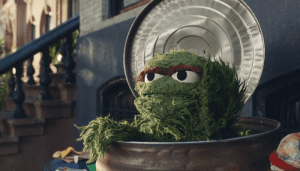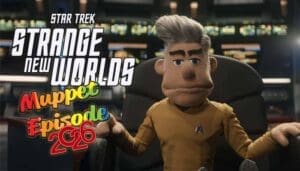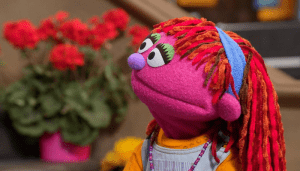The Talk Show That Smelled: An Introduction to The Animal Show
In the mid-1990s, a unique scent wafted across the television landscape, a curious blend of educational facts and classic Muppet-style comedy. This was the era of Jim Henson’s The Animal Show, a series that, while perhaps not as universally remembered as its predecessors, holds a special place in the hearts of a generation. The show’s premise was simple yet innovative: a talk show hosted by two charismatic puppet characters, a skunk named Stinky and a polar bear named Jake. This format allowed for a seamless fusion of entertainment and factual content, as the hosts interviewed various animal guests and showcased live-action footage of their real-life counterparts.
The series originally aired from October 3, 1994, to June 28, 1998. It first premiered as a part of the
Fox Cubhouse block for its initial two seasons before moving to Animal Planet for its third, which began airing on February 18, 1998. This migration between networks illustrates the show’s adaptability and its appeal to different audiences, from a broad children’s programming block to a specialized nature channel. The show’s Emmy nomination and positive critical reception, with one review calling it “one of the best new children’s shows in years,” firmly established its quality and educational value.
The production of The Animal Show was a truly international collaboration, helmed by both the U.S.-based Jim Henson Productions and the U.K. company Survival Anglia Ltd. This partnership is significant, as it reflects a foundational element of the Henson philosophy. Jim Henson’s earlier series,
Fraggle Rock, was famously designed from the ground up to be an international production, with the entire show constructed to be adapted for global markets. The shared production on
The Animal Show is a continuation of this global-minded approach, a strategy that helped the series achieve its wide syndication and high production value. By examining this broader context, it becomes clear that the show was not a creative one-off but a product of a mature media company that understood how to create content with universal appeal.
The Furriest Talk Show on Air: A Format Unlike Any Other
The central genius of The Animal Show was its talk show format, a unique and engaging framework for a children’s educational series. Each episode featured the hosts, Stinky and Jake, interviewing one or two different animal guests. This structure created a dynamic, character-driven narrative that seamlessly integrated live-action documentary footage to illustrate the animals’ stories and behaviors. The guest list was wonderfully eclectic, pairing animals in ways that were either thematically similar, such as the burrowing Tarantula and Mole , or comically disparate, like the giant Tiger and the tiny Tiger Beetle.
To keep the format fresh, the show incorporated a series of recurring segments. There was “That’s Amazing” with Armstrong the Chickenhawk, a segment that highlighted impressive animal feats. “Baby Talk” showed live footage of baby animals, with the puppeteers providing humorous voice-overs. Quizzes, often led by the computer-animated Tizzy the Bee, provided opportunities for Stinky to give hilariously wrong answers, which Jake would then correct with a factual explanation. These segments acted as the show’s commercial bumpers and were a consistent source of both information and amusement.
When placed within the larger pantheon of Henson productions, The Animal Show‘s format truly stands out. While The Muppet Show embraced the chaotic, vaudeville-style humor of backstage antics and breaking the fourth wall, The Animal Show maintained a more formal, observational comedic style. The humor did not arise from the chaos of a variety show but from the intellectual and cultural misunderstandings between the animal hosts and their guests. The show’s use of a talk show as a form of subtle satire is a key part of its appeal. By placing animal characters in a distinctly human setting, the show cleverly critiques human rituals and customs from a non-human perspective. For instance, when Stinky sees a human washing dishes, he views it as “strange stuff” and asks why the human is “sticking your paws in water and splashing them around for no good reason”. This simple comedic exchange reverses the typical trope of an animal being the simpleton. Here, the animals are the civilized ones, and humans are the strange, perplexing creatures. This approach allows the show’s humor to transcend simple silliness, turning it into a smart, timeless commentary on our own world.
The Odd Couple of the Animal Kingdom: A Character Study of Stinky and Jake
At the heart of The Animal Show‘s enduring appeal lies the perfect comedic pairing of its hosts. Stinky the Skunk, performed by the legendary Dave Goelz, is the show’s comedic engine. Described as funny and a little silly, Stinky’s charm is rooted in his naive paranoia and his delightfully skewed perspective on the world. His character is perfectly encapsulated in his signature song, “Stinky, Stinky, that is my name, laughing, loving that is my game,” which showcases his self-aware yet vulnerable nature.
His co-host, Jake the Polar Bear, performed by Steve Whitmire, is the ideal foil. Jake is the calm, jovial, and intelligent anchor of the show, a thoughtful straight man to Stinky’s unpredictable antics. He patiently and factually corrects Stinky’s numerous misunderstandings, a dynamic that provides a reliable source of humor and serves as a teaching mechanism. The contrast between Stinky’s instinct-driven reactions and Jake’s measured intellect is a classic “Odd Couple” formula that drives the show’s narrative and comedy.
The Emmy nomination for The Animal Show is a testament not just to its educational content but to the sophisticated comedic performances of its lead puppeteers. The show’s self-referential humor, such as when it interviews its hosts as “extra special guests” in their own right, demonstrates a confidence in the audience’s investment in their dynamic. This clever meta-awareness is a hallmark of an intelligent production. The foundation of this successful dynamic lies in the puppeteers themselves. Both Dave Goelz and Steve Whitmire were seasoned Muppet veterans, personally nurtured and trained by Jim Henson himself. Jim Henson once noted Dave Goelz’s strength was that he was a “very funny guy”. This knack for comedy is on full display as Stinky’s innocent confusion drives the show’s jokes. Meanwhile, Steve Whitmire’s performance as the intellectual, anchoring Jake provides the necessary balance. The humor stems from a deep understanding of character archetypes, making the show’s comedic moments far more impactful and enduring than simple slapstick.
Behind the Scales and Fur: Henson’s Creature Shop and the Art of Puppetry
The Animal Show holds a unique place in the history of the Jim Henson Company, serving as a key project in the post-Jim Henson era. The characters were brought to life by a team of veteran puppeteers, including Dave Goelz (Stinky) and Steve Whitmire (Jake). Both performers had a long history with the company; Jim Henson himself had personally scouted and trained them. Their continued work on projects like
The Animal Show was a testament to the company’s commitment to preserving its legacy of creative excellence following Jim Henson’s passing. This includes the nuanced history of Steve Whitmire, who took over iconic roles like Kermit the Frog after Henson’s death and later had a well-documented professional split from Disney, highlighting the complexities of character ownership and performance.
A crucial element of the show was its seamless fusion of traditional puppetry with innovative technology. While Stinky and Jake were physical hand puppets, much like classic Muppets, a character like Tizzy the Bee was an entirely different creation. Tizzy was a “100% computer generated character,” a pioneering example of what would become known as “digital puppetry”. This was made possible by the “Henson Digital Puppetry Studio” and the “Performance Control System,” a custom interface that allowed puppeteers to control digital avatars in real-time. This award-winning system, which took years to develop, was so advanced for its time that it required cameramen to learn to “focus on things that aren’t there” to make the digital character appear realistic within a scene.
This blend of old and new is a microcosm of the entire Henson Company’s creative philosophy. The show honored the tactile artistry of traditional puppet performance—which, as the anecdote of Carroll Spinney’s strengthened arm from years of playing Big Bird shows, is an intensely physical craft —while simultaneously pushing the boundaries of what was possible with technology. The integration of a fully digital character like Tizzy was not a gimmick; it was a deliberate continuation of Henson’s core belief that technology should serve to enhance the art of performance, not replace it. The presence of physical puppets alongside a bleeding-edge digital character demonstrates a profound artistic and technological vision, solidifying
The Animal Show‘s place as a key milestone in the history of character-based special effects and children’s television.
“I Think I’ve Just Been Stunk”: A Comedic Taxonomy
The humor in The Animal Show was sophisticated, layered, and a primary vehicle for its educational content. It taught children that learning could be a funny and delightful process, and it did so with a level of wit that appealed to adults as well. The show’s comedy can be categorized into a few key areas, each contributing to its unique charm.
The Animal Kingdom’s Funniest Moments: A Comedic Breakdown
| Gag Type | Classic Example | Analysis |
| The Naive Interpreter | Stinky sees a human washing dishes and thinks they are “splashing them around for no good reason”. He later mistakes a car for a “giant white beast” eating a human. | This is the core of the show’s humor. Stinky’s naive misinterpretation of human actions and objects creates comedy through the absurd reversal of roles. The jokes function as prompts for Jake’s factual explanations, teaching kids about human customs and technology from a non-human perspective. |
| The Straight-Man’s Struggle | Jake patiently tries to explain to Stinky that the car is an “automobile” used for “work and to travel”. His constant, good-natured attempts to correct Stinky’s bizarre assumptions are a source of endless, endearing comedy. | Jake’s role as the intellectual, level-headed polar bear is a classic comedic archetype. His gentle exasperation is relatable to both children learning a new concept and adults dealing with a friend’s foolishness. |
| The Oddball Guest | The show frequently pairs animals with dramatically different physical characteristics or personalities, such as a Tiger and a Tiger Beetle. This juxtaposition creates inherent humor. | The comedy in these pairings is a visual and intellectual joke. It highlights the vast diversity of the animal kingdom and provides opportunities for witty dialogue that contrasts their respective lives and behaviors. |
| The Musical Pun | The show’s original songs often have clever, pun-filled titles, such as “Sweet Little Treat” (about a cheetah and a gazelle) and “Sax and Violence” (about a bighorn sheep and a red deer). | The titles are a signal that the show is aimed at both children and adults. The humor is subtle and a reward for attentive viewers, adding a layer of wit to the educational content. |
The show’s humor functions as a clever and effective learning tool. Stinky’s incorrect answers in the Tizzy quizzes or his bewildered reactions to human inventions are not just jokes; they are prompts for the factual answers provided by Jake or the real-life footage. This method teaches children that it is perfectly acceptable not to know everything and that the process of discovery can be fun and filled with laughter. By making the “wrong” answer the source of a joke, the show reduces the pressure to be correct and encourages a natural, curious approach to learning. This pedagogical strategy is a clear departure from the dry, lecture-based formats of many other educational programs, demonstrating a profound understanding of how to engage a young audience.
The Enduring Scent of Nostalgia: Fan Culture and Legacy
Despite its critical success and Emmy nomination, The Animal Show is not as widely remembered as other Henson classics like The Muppet Show or Fraggle Rock. This lack of consistent re-runs for a period of time has, ironically, made it a potent source of nostalgia for a specific generation. Online forums like Reddit are filled with threads where fans, often now adults, seek to “find” or “remember” the show, describing its unique talk-show format and its catchy instrumental theme. This collective effort to unearth a piece of their childhood makes the show’s legacy one of community and shared discovery.
This phenomenon is part of a broader trend of 90s nostalgia for children’s television. The Animal Show represents a bygone era, and its online rediscovery mirrors similar fan-driven revivals of other shows, such as Bee and PuppyCat. This fan base isn’t just reminiscing; they are actively preserving and celebrating a piece of cultural history that might otherwise have been forgotten. The show’s appearance on modern streaming services like Yippee TV is a direct response to this ongoing fan demand.
Furthermore, the show’s legacy is tied to a generational shift in television programming. The Animal Show aired on Animal Planet during a time when the channel’s programming was almost exclusively focused on wildlife documentaries and educational content. For fans who grew up with the show, their nostalgia for it is not just for the puppets but for a lost era of television—a time before the channel’s shift toward reality TV. The collective act of searching for and sharing memories of the show on forums and YouTube is a modern form of community-building that reinforces its cultural importance. The show’s legacy, therefore, is not just about a single program but about a shared experience that defines a specific cultural moment for a cohort of viewers.
The Verdict: Why We’re Still Roaring for The Animal Show
Jim Henson’s The Animal Show was far more than a simple puppet show; it was a masterclass in educational entertainment. Its unique talk-show format, brilliant comedic duo, and a seamless blend of traditional and cutting-edge digital puppetry solidified its place as a standout series in the Henson legacy. The show’s humor, driven by Stinky’s naive confusion and Jake’s patient intellect, was not just for laughs; it was a deliberate pedagogical tool that made learning fun, accessible, and deeply engaging.
The show’s enduring appeal is a testament to its genuine quality and its ability to forge a lasting connection with its audience. For a generation of fans, it remains a beloved “deep cut,” a nostalgic touchstone for a time when children’s media was both a communal and genuinely enriching experience. The show’s genius lies in its ability to deliver genuine education through genuine humor, reminding us to see the world “through the eyes of animals” and, in doing so, to gain a fresh perspective on ourselves.




